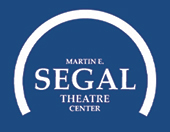As we approach Monday’s “Intersections with Art and Performance,” I’ve been wondering about the stakes of the debate: the very notion of an intersection is based upon the assumption that our two elements are coming from different vectors. And though I’m not arguing that the disciplines are bogus, I’m wondering why and how we continue to police their borders.
Goodness knows that art and performance have always been intertwined, whether Raphael was creating a court spectacular or Wagner was emphasizing landscape painting for the gesamtkunstwerk. The “intersections” have been theorized by Plato, Horace, Jonson, Diderot, Schiller, de Loutherbourg, Hegel, Artaud, to name a select few. Indeed, reviewing criticism in the 20th century, from Clement Greenberg’s heralding of action painting to the theatrical satire of Fluxus to the Theatre of Images—Foreman, Wilson, and Mabou Mines to Wooster Group, Forced Entertainment, and Radiohole—the notion of separating “art” and “performance” seems, well, quaint.
I bring this up polemically because I’ve witnessed too many discussions along these lines that exhaust the issue of disciplinarity, its uses and uselessness. To be honest, the debate can be framed either way, and, as I speak to more and more artists and performance companies, the only time they consider the issues is when figuring out where to list their marketing material and press releases.
Let’s pull this issue out by its roots instead: why are we forced to discuss interdisciplinarity? What purposes, anxieties, market forces, communities does it serve? Does maintaining some sort of disciplinary autonomy serve any purpose to the artists themselves?
This entry was posted in Uncategorized and tagged action painting, art, disciplinarity, marketing, performance, theatre of images. Bookmark the
permalink. Both comments and trackbacks are currently closed.








staking disciplines
As we approach Monday’s “Intersections with Art and Performance,” I’ve been wondering about the stakes of the debate: the very notion of an intersection is based upon the assumption that our two elements are coming from different vectors. And though I’m not arguing that the disciplines are bogus, I’m wondering why and how we continue to police their borders.
Goodness knows that art and performance have always been intertwined, whether Raphael was creating a court spectacular or Wagner was emphasizing landscape painting for the gesamtkunstwerk. The “intersections” have been theorized by Plato, Horace, Jonson, Diderot, Schiller, de Loutherbourg, Hegel, Artaud, to name a select few. Indeed, reviewing criticism in the 20th century, from Clement Greenberg’s heralding of action painting to the theatrical satire of Fluxus to the Theatre of Images—Foreman, Wilson, and Mabou Mines to Wooster Group, Forced Entertainment, and Radiohole—the notion of separating “art” and “performance” seems, well, quaint.
I bring this up polemically because I’ve witnessed too many discussions along these lines that exhaust the issue of disciplinarity, its uses and uselessness. To be honest, the debate can be framed either way, and, as I speak to more and more artists and performance companies, the only time they consider the issues is when figuring out where to list their marketing material and press releases.
Let’s pull this issue out by its roots instead: why are we forced to discuss interdisciplinarity? What purposes, anxieties, market forces, communities does it serve? Does maintaining some sort of disciplinary autonomy serve any purpose to the artists themselves?